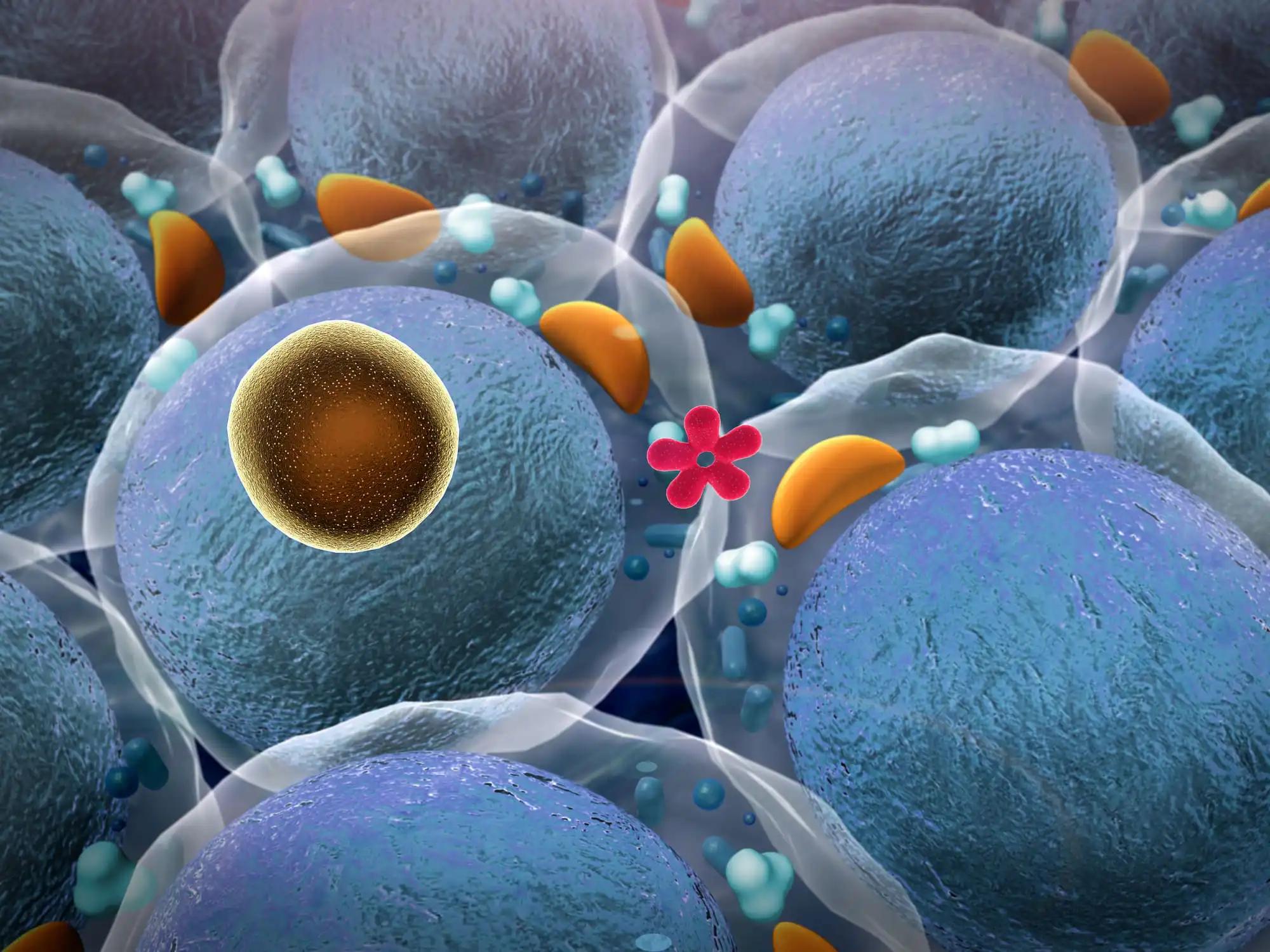KEY TAKEAWAYS
- The DESTINY-Lung02 trial is a phase 2, blinded, randomized, non-comparative trial that assessed the benefit-risk profile of T-DXd in previously treated HER2-mutant metastatic NSCLC.
- The primary aim was to evaluate the (cORR) by (BICR) of T-DXd doses 5.4 and 6.4 mg/kg Q3W, respectively.
- In the PEC, T-DXd 5.4 mg/kg demonstrated a higher cORR of 53.8% (95% CI, 39.5-67.8%) compared to 42.9% (95% CI, 24.5-62.8%) in the 6.4 mg/kg group.
- (TEAEs) were more frequent with T-DXd 6.4 mg/kg compared to 5.4 mg/kg in both PEC and SAS. The median treatment duration was 4.7/5.5 mo and 3.3/3.7 mo.
- DESTINY-Lung02 demonstrated clinically meaningful activity with T-DXd 5.4 mg/kg and 6.4 mg/kg in previously treated HER2m NSCLC in the PEC, with a more favorable safety profile with T-DXd 5.4 mg/kg.
After prior treatment, patients with HER2-mutant (HER2m) NSCLC responded well to T-DXd 6.4 mg/kg (an antibody-drug conjugate) in the DESTINY-Lung01 study. Patients with HER2m metastatic NSCLC who had received prior treatment were analyzed in DESTINY-Lung02 to determine the benefit-risk profile of T-DXd doses of 5.4 and 6.4 mg/kg (NCT04644237). Interim results from DESTINY-Lung02 are presented here. The trial was a phase 2 non-comparative blinded study. T-DXd 5.4 or 6.4 mg/kg Q3W was randomly assigned to half of the patients. The confirmed Objective response rate (cORR) was considered the primary endpoint by a blinded independent central review (BICR). The secondary endpoints were the safety-confirmed disease control rate (cDCR) and duration of response (DoR) by BICR. Patients who had postbaseline tumor assessments were included in the prespecified early cohort (PEC; randomized≥4.5 months [mo] before data cutoff [DCO]).
All randomized patients who received ≥1 dose of T-DXd made up the safety analysis set (SAS). Insufficient data were collected for a reliable statistical analysis of the doses. T-DXd 5.4 and 6.4 mg/kg were administered to 101 and 50 patients in the PEC and SAS, respectively, at DCO (03/24/2022). Approximately 5.6 months and 3.8 months were spent in follow-up, respectively. The cORR for patients treated with T-DXd 5.4 mg/kg or 6.4 mg/kg in the PEC ranged from 53.8% (95% CI, 39.5-67.8%) to 42.9% (95% CI, 24.5-62.8%). T-DXd 6.4 mg/kg was associated with a higher rate of TEAEs in the PEC and SAS (median treatment duration, 4.7/5.5 months and 3.3/3.7 months, respectively) compared to T-DXd 5.4 mg/kg. Patients receiving T-DXd 5.4 mg/kg were 5.9% more likely than those receiving T-DXd 6.4 mg/kg to develop any-grade adjudicated drug-related interstitial lung disease in the SAS. Both T-DXd 5.4 mg/kg and 6.4 mg/kg showed clinically meaningful activity in patients with previously treated HER2m NSCLC in the PEC, but T-DXd 5.4 mg/kg had a more favorable safety profile.
Source:https://oncologypro.esmo.org/meeting-resources/esmo-congress/trastuzumab-deruxtecan-t-dxd-in-patients-pts-with-her2-mutant-metastatic-non-small-cell-lung-cancer-nsclc-interim-results-from-the-phase-2-d
Clinical Trial: https://clinicaltrials.gov/ct2/show/NCT04644237
K. Goto, K. Sang-We, T. Kubo, Y. Goto, M. Ahn, D. Planchard, D. Kim, J.C. Yang, T. Yang, K.M.C. Pereira, K. Saxena, R. Shiga, Y. Cheng, M. Aregay, P.A. Jänne/LBA55 – Trastuzumab deruxtecan (T-DXd) in patients (Pts) with HER2-mutant metastatic non-small cell lung cancer (NSCLC): Interim results from the phase 2 DESTINY-Lung02 trial/Annals of Oncology (2022) 33 (suppl_7): S808-S869. 10.1016/annonc/annonc1089



